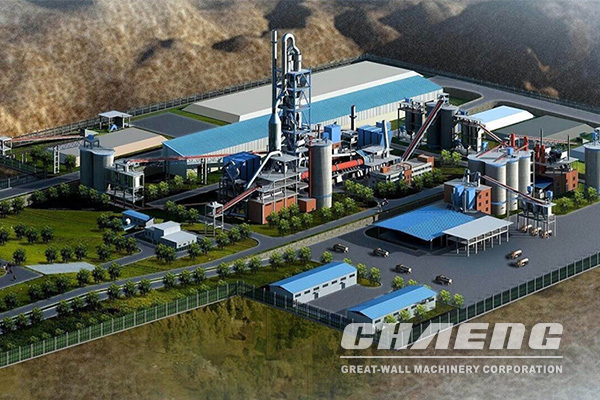18 Dec,2017 UTC+8 Views:
Chaeng has been manufacturing cement kilns 60 years and has vast experience in designing this high-demand equipment type. We have been constantly improving our technologies and have a goal of implementing the latest generation equipment which allows decreasing the cement production dust emissions significantly and reaching European environmental protection targets.

The cement kilns are a source of about 5 % of man-caused carbon dioxide emissions. It is recognised that CO2 is the main cause of global warming due to its capability of holding solar energy in atmosphere generating the so-called greenhouse effect.
The developed countries which have ratified Kyoto Protocol support the idea of decreasing the greenhouse gas and sulphur dioxide (SO2) emission decrease. As the second-largest carbon dioxide emission source (next to electric power generation facilities), cement industry must make its contribution to achievement of the set goals.
The main environmental impacts during cement production are caused by the following factors:
- dust (chimney emissions and volatile components)
- gaseous emissions to atmosphere (NOx, SO2, CO2, VOC, others)
- other emissions (noise and vibrations, smell, waste water, production wastes, etc.)
- resource consumption (power, raw materials)
Dust
Historically, dust emissions (especially those from kilns) as a cement production environment pollution factor are most alarming.
The main cause of dust emissions are raw material plants, calcination kilns, clinker coolers and cement mills. The main peculiarity of these processes is the fact that the hot exhaust gas or exhaust air flow through the material comminuted to dust forming dispersed mixture of gas and dust. The main properties of the particles depend on the source material, i.e. clinker and or cement.
Currently some up-to-date engineering dust emission control methods are available (electrostatic precipitators, filters) which reduced the dust formation in cement industry by about 90% over the latest 20 years.
Dust formation caused by sources distributed over the plant area ("fugitive dust") can occur due to storage and handling, i.e. in transportation system, storages, during lifting crane movement, sacking, etc., and during transportation, when a vehicle moves down dirt roads.
Since chemical and mineralogical composition of cement dust is similar to that of natural stone, its impact on human health is considered to be harmful, but not toxic.
Dust emission and formation control at a modern cement plant needs investments and competent management methods, but these are not technical issues.
Gas emanation to atmosphere
Gaseous emanations from the kiln system emitted to atmosphere are challenge No. 1 in environmental improvement during cement production today.
The main gases emitted to atmosphere are NOx and SO2. Other less harmful compounds are VOCs (volatile organic components), CO, ammonia, HCl and heavy metals.
CO2 is a gas which is used in large amounts for heating greenhouses and hothouses. The NOx formation is an inevitable corrolary of high-temperature combustion processes. Sulphur fed into kilns with raw material and fuel is significantly absorbed by kiln products.
However, the sulphur contained as sulphides (or organic sulphur compounds) in the raw material volatilise easily at low temperatures (i.e. 400 to 600 ° C), which may result in significant SO2 evaporations through chimneys. Other undesirable volatile substances fed into the kiln system are either destroyed at high-temperature combustion efficiently, or almost completely absorbed by the product.
Thus, an integral part of the cement kiln process is insignificant emissions of such gases as VOCs, HCl, HF, NH3 or heavy metals. Presence of organic components in natural raw materials can increase the hydrocarbon evel and CO emissions significantly.
Emission of chlorine-containing hydrocarbons, such as dioxins and furans are usually much lower than the existing maximum permissible discharge values. Other volatile components, such as mercury are controlled thoroughly so that to preclude undesired atmospheric emissions. Carbon dioxide is emitted as a result of the source material calcination and fossil fuel combustion. The carbon dioxide emission as a result of fuel consumption was progressively decreased as due to strong economic incentive to minimise the fuel-generated energy consumption.
There are three main ways to reduce harmful emissions:
· Using alternative fuel
· Using raw materials which are most easy in processing
· Using optimised equipment and improved filtration systems
The most of cement-producing companies strive to implement all three trends. As a famous cement kiln manufacturer designs and manufactures cement production lines where all equipment facilitates in observing high environmental standards. Implementation of up-to-date dust removal equipment allows decreasing the adverse environmental impact several fold.